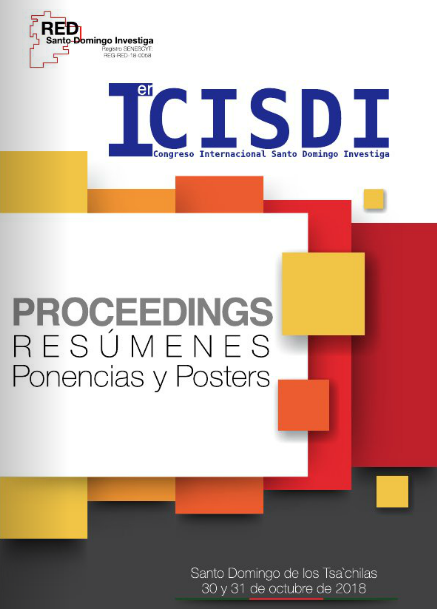RESUMEN
El frijol o judía verde (Phaseolus vulgaris L.) es uno de los cultivos andinos que forma parte de la dieta básica de la población rural, principalmente en la sierra y costa Ecuatoriana. A pesar de que el país cuenta con alimentos suficientes para su población, existe una falta de disponibilidad y acceso a ellos que hacen que uno de cada cuatro Ecuatorianos padezca hambre y malnutrición crónica. En el ámbito rural esa cifra supera el 40% (INIAP 2012).
En este sentido, con el presente Trabajo Fin de Carrera se estudia la fertilización en el cultivo de frijol utilizando diferentes tipos de fertilizantes, minerales y orgánicos, para comprobar cuáles producen los mejores rendimientos y llevan un menor coste asociado. Aspecto que en definitiva, se traduce en un mayor beneficio para el agricultor Los ensayos se llevaron a cabo en la provincia de Santo Domingo de los Tsa´chilas, cantón Santo Domingo. Se establecieron tres tratamientos en seis tipos de fertilizantes minerales y orgánicos.
Se ha ensayado con la variedad frejol canario, cuya introducción en la zona ha sido reciente, pero se han obtenido buenos rendimientos en vaina verde en campañas anteriores. En general, el cultivo se lleva a cabo entre los meses de agosto y noviembre.
El manejo del cultivo se realizó de forma similar a lo acostumbrado en la zona. Pero se llevó a cabo un seguimiento del cultivo en cuanto a plagas, enfermedades, condiciones climáticas, etc. A partir de estas observaciones se deciden los tratamientos fitosanitarios y riegos necesarios.
Al final del cultivo se realizó la cosecha para obtener el rendimiento y también se realizara muestreos, tales como altura y peso fresco de planta, pero sobre todo los que incumben al rendimiento como peso fresco y seco de las vainas, longitud de vainas o peso de 100 granos.
Finalmente, los resultados obtenidos muestran que, estadísticamente, ninguno de los tratamientos presentó un rendimiento superior al resto, aunque sí se muestra una tendencia de los fertilizantes minerales a conseguirlo, ya que en algunos parámetros de rendimiento como peso fresco y seco de vaina o longitud de vaina sí obtuvieron los mejores resultados.
A nivel económico los fertilizantes minerales y el testigo (sin fertilización) dieron lugar a los mayores beneficios, pero con ventaja ligera frente a los orgánicos, exceptuando los tratamientos en los que se aplicó biol, cuyo coste fue muy elevado, lo que dio lugar a beneficios muchos menores.
SUMMARY
The bean or green bean (Phaseolus vulgaris L.) is one of the Andean crops that is part of the basic diet of the rural population, mainly in the mountains and the Ecuadorian coast. Although the country has enough food for its population, there is a lack of availability and access to them that make one in four Ecuadorians suffer from hunger and chronic malnutrition. In rural areas, this figure exceeds 40% (INIAP 2012).
In this sense, with the present End of Career Work is studied the fertilization in the bean crop using different types of fertilizers, minerals and organic, to verify which produce the best yields and have a lower associated cost. Aspect that ultimately translates into a greater benefit for the farmer The trials were carried out in the province of Santo Domingo de los Tsa'chilas, Santo Domingo canton. Three treatments were established in six types of mineral and organic fertilizers.
It has been tested with the variety Canarian beans, whose introduction in the area has been recent, but good yields have been obtained in green pods in previous seasons. In general, the cultivation takes place between the months of August and November.
The management of the crop was carried out in a similar way to what is customary in the area. But the crop was monitored for pests, diseases, climatic conditions, etc. Based on these observations, the phytosanitary treatments and necessary irrigation are decided.
At the end of the crop the harvest was carried out to obtain the yield and also samplings, such as height and fresh plant weight, but above all those that concern the yield as fresh and dry weight of the pods, length of pods or weight of 100 grains
Finally, the results obtained show that, statistically, none of the treatments presented a superior performance to the rest, although it does show a tendency of the mineral fertilizers to achieve it, since in some performance parameters such as fresh and dry weight of pod or length of sheath did get the best results.
At the economic level, the mineral fertilizers and the control (without fertilization) gave rise to the greatest benefits, but with a slight advantage over organic ones, except for the treatments in which biol was applied, which cost was very high, which led to many less benefits.




